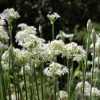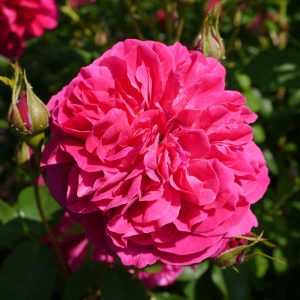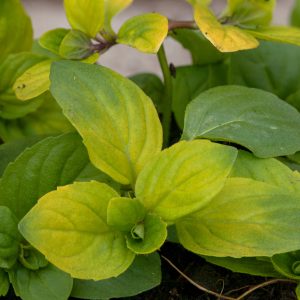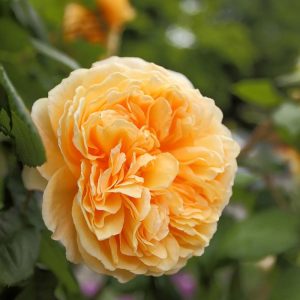Description
Allium tuberosum, commonly known as garlic chives or Chinese chives, is a perennial herb in the Allium genus, native to Asia. It is similar in appearance to regular chives (Allium schoenoprasum) but has a stronger garlic flavor.The plant features narrow, flat leaves that are green and have a garlicky smell, they typically grow to be about 18-24 inches tall. They also produce small, white, star-shaped flowers that bloom in late summer to early fall and attract pollinators like bees and butterflies. The leaves, flowers and bulbs are edible and often used in Asian cooking, such as in dumplings, soups and stir-fries, as well as in salads, dips, or as a garnish.
Key Facts
- Common Name(s):Garlic Chives
- Hardiness:Fully hardy through most of the UK
- How big will I get? Allium tuberosum can grow to a height of 0.5m and a spread of 0.5m.
- Did You Know That:If grown in soil with no sulphur present at all, all Allium species will lose all their typical scent?
Plant Calendar
A rough guide to how this plant will change through the year.
| Jan | Feb | Mar | Apr | May | June | July | Aug | Sept | Oct | Nov | Dec | |
| Flowering Time | 
| 
| ||||||||||
| Foliage Colour |  |
 |
 |
 |
 |
 |
 |
 |
 |
| J | F | M | A | M | J | J | A | S | O | N | D |

| 
| ||||||||||
 |
 |
 |
 |
 |
 |
 |
 |
 |
Care Guide

Soil Requirements
Allium tuberosum prefers moist but well-draining soil. This plant can grow in soil with a wide range of pH levels, it is not picky about the pH level of the soil.

Best Position
Allium tuberosum prefers a sheltered position and requires full sun to thrive, this consists of more than six hours of direct sunshine per day.

Maintenance
Allium tuberosum is fairly low maintenance and doesn’t require any pruning. Alliums are often kept untouched through Autumn and Winter due to the attractive shape of their seed head which is reminiscent of the flowers just without the colour. Any remaining growth can be cut back in early Spring to encourage fresh growth or immediately after flowering if you are wanting more space in your borders.

Pest, Diseases and Wildlife
Allium tuberosum can have problems with slugs and snails, it can be vulnerable to certain diseases such as downy mildew. It is also known to attract bees, butterflies and other pollinators. It is toxic to cats, dogs and horses.





